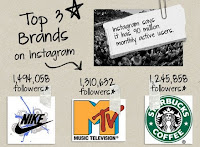Blogging has definitely grown during that past few years. The practice has expanded beyond the typical blogger realm and into companies both small and large. And can we blame them? With professional blogging platforms like Blogger or WordPress, it’s easier than ever to post articles and content related to your industry. These platforms can also be customized to fit the look and feel of your company and branding. Blogging gives you a voice within the internet and if you’re good, you’ll develop a pretty loyal following in no time.
Show Off A BitBlogging lets you demonstrate your knowledge about your industry. It gives clients or customers even more of a reason to trust you and that you know what you’re doing. Displaying this knowledge will help your company by attracting outsiders to check out not just your blog, but your website as well.
Ultimately you’ll be seen as someone who is reliable within their field and can be a trusted source of knowledge. As a company, you want to give your clients or customers that reassurance, that way they’ll not only use your services, but will spread the word about your company as well.
Builds LinksWithin your blog posts you can reference outside links, whether it is your own website or a previous blog post. It’s also good to link back to other bloggers as that will build an online relationship. Of course, by adding outside bloggers, you’re hoping that they’ll return the favor – either in their own blog or even on social media sites.
Also, blogs are preferred by search engines like Google and are often utilized for SEO purposes. As most of us already know, SEO is the top way to get your company noticed in today’s world that thrives off of the internet.
Gives You a VoiceHaving that extra presence never hurts, especially on an unlimited source like the internet.
Think about it, someone may come across your blog without having to see your website first, which is usually how it happens if one is searching primarily for blogs. The blog can help with announcing the latest news within your company, or can just be a space to put your own two cents about certain topics or trends related to your field. And since it’s your blog, you can pretty much say what you want, of course keeping it within reason.
The key with blogging is to develop quality, relevant content so readers will continue to return to read your next post. That is ultimately what will draw in an audience, and then you can focus on utilizing keywords for SEO and share your content on various social media platforms.
Does your company blog?
Source: MSM DesignZ, Inc. is a Westchester based NY web design firm specializing in SEO, social media, web and graphic design and much more.













